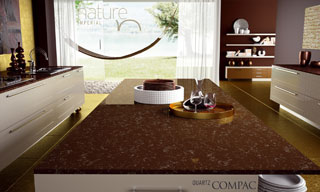
Natural stone is typically the preferred choice for countertops, as it not only adds to the beauty of a home, but the high quality associated with the material increases the monetary value of the home as well. Granite and Italian marble are the most common stones used for designing countertops, as they are both aesthetically pleasing and have many practical benefits. The stones differ in their appearance and longevity, so it is crucial for homeowners, designers and builders to keep factors like personal style and required maintenance in mind when deciding which material to use for countertops.
Granite
Granite is a type of igneous stone and is formed from cooled lava and magma. It consists of many different minerals, all in varying amounts. Typically, the sort of minerals found within granite stones include:
-
Silica;
-
Quartz;
-
Feldspar; and
-
Mica.
Each mineral is contributes to the stone's overall appearance, colour and durability.
Granite is well known for its resistance to scratching and chipping and its ability to endure high temperatures of up to 12,000 degrees Fahrenheit. Therefore, granite is highly resistant to stains, including burns and char stains. These benefits make granite a logical choice when selecting materials for the kitchen.
When used for kitchen countertops, granite is great for food preparation, cooking and baking. Because of its durability, granite countertops work well as food cutting surfaces and can handle hot pots and baking pans. However, to preserve granite countertops and ensure their longevity, it is recommended that cutting boards, place mats and coasters are used whenever possible.
Marble
While granite is a type of igneous stone, marble is a type of metamorphic stone. Metamorphic stones are formed from intense heat and pressure that ultimately transforms the rock's composition. For example, when exposed to immense heat and pressure, limestone is transformed into marble. In addition to limestone, other types of "parent” marble rocks include travertine and onyx. While granite is known for its strength, which is often said to match that of a diamond, Italian marble is better known for its porous nature and its relative softness, making it an excellent medium for sculpting.
Italian marble is also used for kitchen countertops, however it is not as common as granite countertops, especially in the United States and Canada. Marble countertops tend to be more frequently used in countries like Italy, where they are employed as baking preparation surfaces, not as cutting surfaces or cooling places for hot pots and pans. Italian marble surfaces work well as a place to knead bread and create pastries and pastas because of its exceptionally smooth surface.
Since Italian marble is more porous in comparison to granite, it is more likely to scratch, chip, etch, stain and burn when used as a kitchen countertop. Marble works well as baking boards or in areas of the home outside of the kitchen, such as the bathroom, where it can be used for flooring.